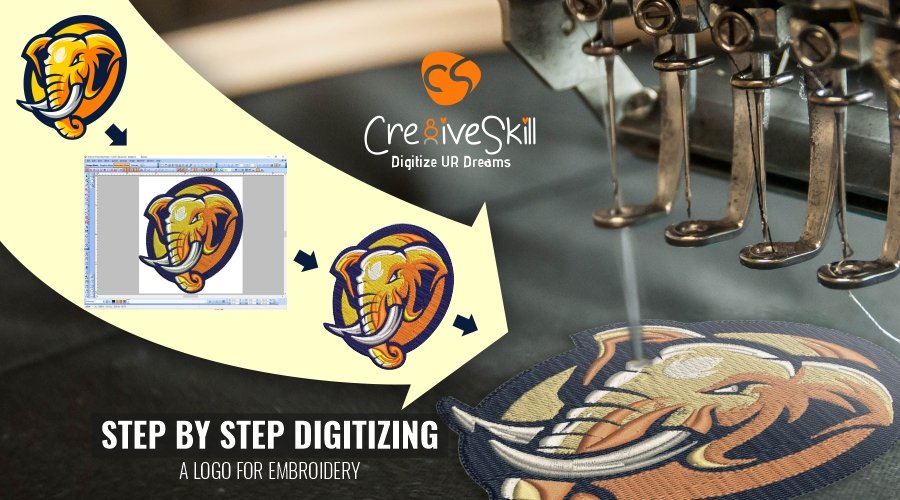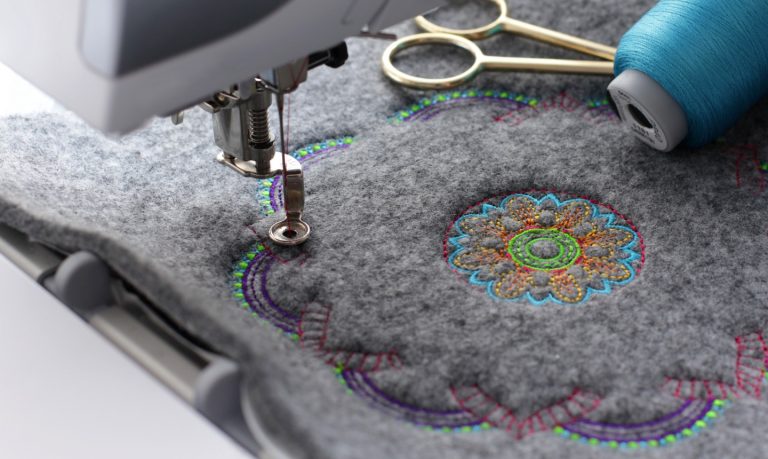Comprehensive Digitizing for Embroidery: From Layout to Stitch
Streamlining the Art of Needlework Digitizing: Step-by-Step Guide
As technology continues to breakthrough, the digitization process has come to be a lot more accessible, enabling fanatics to bring their elaborate designs to life with convenience. In this guide, we will unravel the intricacies of embroidery digitizing, breaking down each step systematically to enhance the procedure and equip both novices and skilled embroiderers alike.
Recognizing Needlework Digitizing Software Application
Embroidery digitizing software works as a vital device for transforming complex styles into electronic layouts compatible with embroidery machines, promoting precise stitching and customization. This specific software program allows individuals to import different image file formats, such as JPG or PNG, and convert them right into needlework machine-readable formats like DST, EXP, or PES - Digitizing for Embroidery. By utilizing functions like stitch modifying, padding choices, and string color choice, digitizing software program allows customers to regulate every aspect of the design process
Moreover, progressed needlework digitizing software application supplies tools for creating complex layouts, changing stitch density, and including intricate information. Users can additionally sneak peek the layout prior to stitching it out, ensuring precision and decreasing mistakes. Furthermore, numerous software application programs offer automated functions that aid streamline the digitizing process, conserving time and effort.
Recognizing the abilities of needlework digitizing software program is essential for achieving high-grade results in embroidery tasks. By understanding this device, embroidery fanatics and professionals can unleash their creativity and bring intricate layouts to life with precision and performance.

Picking the Right Design Documents
After familiarizing on your own with the capabilities of embroidery digitizing software application, the next critical action in the procedure is picking the appropriate design declare your project. Digitizing for Embroidery. When choosing a style declare needlework digitizing, it's vital to think about the intricacy of the design, the size of the end product, and the type of fabric you will certainly be functioning with
For complex styles with fine details, a high-resolution photo or vector data is suggested to make certain that the needlework maker can accurately recreate the design. Furthermore, the dimension of the final product plays a significant function in selecting the appropriate layout documents. Larger designs might call for greater resolution data to keep quality and sharpness.
Furthermore, the type of fabric you will be embroidering on influences the option of design documents. Different materials might require changes in the layout data to ensure that the stitches are effectively straightened and the style appears as meant. By very carefully choosing the appropriate design documents based upon these aspects, you can establish on your own up for an effective needlework digitizing process.
Digitizing Devices and Strategies
Utilizing specialized software and precision techniques, digitizing tools are essential in changing detailed styles into embroidery-ready documents. Needlework digitizing software program, such as Wilcom, Hatch, or Embrilliance, supplies the essential platform to transform art work into stitch data. These programs offer features like stitch editing and enhancing, underlay alternatives, and lettering tools to make sure the style equates flawlessly onto material.
Among the essential techniques in digitizing is developing a clear course for the needlework maker to adhere to. This involves digitizing each component of the style with precision, identifying stitch types, thickness, and instructions. By utilizing tools like digitizing tablets or software-specific plugins, see post embroiderers can achieve a high level of accuracy in their digitized layouts.
Moreover, grasping the art of underlay stitching is critical for Learn More generating top quality needlework. Underlay sewing maintains the material and creates a structure for the design, guaranteeing that the last product is both visually attractive and long-lasting. By understanding these digitizing tools and techniques, embroiderers can elevate their craft and bring complex designs to life with accuracy and effectiveness.
Customizing Stitch Types and Directions
Having actually developed a foundation in digitizing devices and methods, an important facet ahead of time needlework workmanship exists in customizing stitch types and directions with accuracy and objective. The selection of stitch types can dramatically impact the overall look and structure of the embroidered design. Satin stitches, understood for their smooth and shiny finish, job well for developing borders and message. On the various other hand, fill stitches are suitable for covering larger locations effectively. By strategically incorporating these stitch kinds, embroiderers can achieve deepness and measurement in their layouts.
Moreover, the instructions of stitches plays an important duty in boosting the visual charm of the final embroidery. Varying stitch directions can include appearance, emphasize details components, and produce visual passion. Transforming the angle of stitches can mimic motion or natural patterns like fur or feathers. By try out various stitch Visit Your URL angles and patterns, embroiderers can bring their designs to life with impressive information and complexity. Grasping the art of customizing stitch types and directions encourages embroiderers to release their creative thinking and raise the high quality of their job.
Testing and Refining Your Digitized Style
To guarantee the precision and quality of your digitized style, detailed testing and refinement are crucial steps in the embroidery digitizing procedure. When you have finished the digitization of your design, it is essential to check it before proceeding with the actual embroidery. Testing allows you to recognize any kind of potential issues such as string breaks, stitch thickness problems, or design distortions that might influence the result.

After screening, it is very important to fine-tune your digitized style based upon the comments from the test sew-out. This may include tweaking stitch settings, adjusting densities, or making changes to the total design to accomplish the desired result. By iterating with testing and refinement, you can adjust your digitized design to excellence prior to progressing with the real embroidery procedure.
Final Thought
In final thought, grasping the art of needlework digitizing calls for a detailed understanding of the software application, picking the appropriate design file, utilizing digitizing devices and methods, customizing stitch types and directions, and testing and refining the digitized layout. By adhering to these steps, embroiderers can streamline the digitizing process and develop premium embroidered layouts with accuracy and performance.